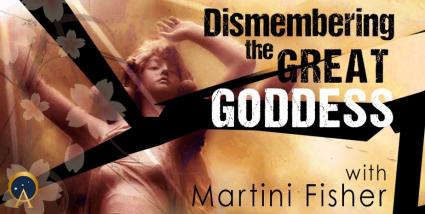
The reign of the Great Goddess was stable enough to endure for thousands of years - but then something went wrong…
In the 19th century, when Swiss scientist Johann Jakob Bachofen showed that a matrifocal age once existed in Europe where the mother, not the father, was as the head of the family or household, this notion was vehemently resisted. Today, “feminine” and “feminism”, with their many variations, has become somewhat of a loaded word. This distaste of femininity started long before the rise of the religions known to us today. In fact, it started with the rebellion against the Great Goddess.
The myths and attributes of the Great Goddess are remarkably similar all over the world. Her nature all-encompassing, she can be empowering and terrifying for men and women alike. The reign of the Great Goddess was stable enough to endure for thousands of years - but then something went wrong. In the new myths, Tiamat, the Great Mother of the ancient Mesopotamians who had been the “mother of all beings” and hence a primary source of creation, came to symbolize chaos. Marduk then dismembered Tiamat to then rebuild and reorder the cosmos out of the pieces of her lifeless body. However, Tiamat was not the one who was supposed to be sacrificed.
The oldest discernible signs of rebellion against the Goddess culture have been found in Anatolia and Mesopotamia. The tradition had been that the semi-divine king, high priest, and consort of the goddess, was supposed to be sacrificed, but by the time the Gilgamesh epic was written down, around 2800 BC, the situation had changed drastically and, thousands of years later, no one recognized the Great Goddess anymore.
What happened to the Great Goddess? How did she become replaced by goddesses such as Demeter and scary ladies such as Medusa?
We’re joined by special Ancient Origins Premium contributor and author of Time Maps: Matriarchy and the Goddess Culture, Martini Fisher who investigates the fate of the Great Goddess in history.
[[{"type":"media","view_mode":"media_original","fid":"7397","attributes":{"alt":"Martini Fisher","class":"media-image","height":"322","style":"width: 289px; height: 322px; float: left; margin: 10px;","typeof":"foaf:Image","width":"289"}}]] Martini Fisher is a Mythographer and Author.
Her first published work is “Wayang: Stories of the Shadow Puppets,” a look at the ancient stories of Javanese creation myths from a traditional performing arts standpoint. With Mathematician Dr. R.K Fisher, Martini wrote another series of books, “Time Maps.” Combining both their expertise, they revisit world history from the beginning, reviewing and questioning facts with mathematical precision and historical curiosity.
Martini continues to gather myths and legends around the globe to present them in a relevant and approachable way for modern audiences.
See Martini’s work at MartiniFisher.com and her books can be found on Amazon.
